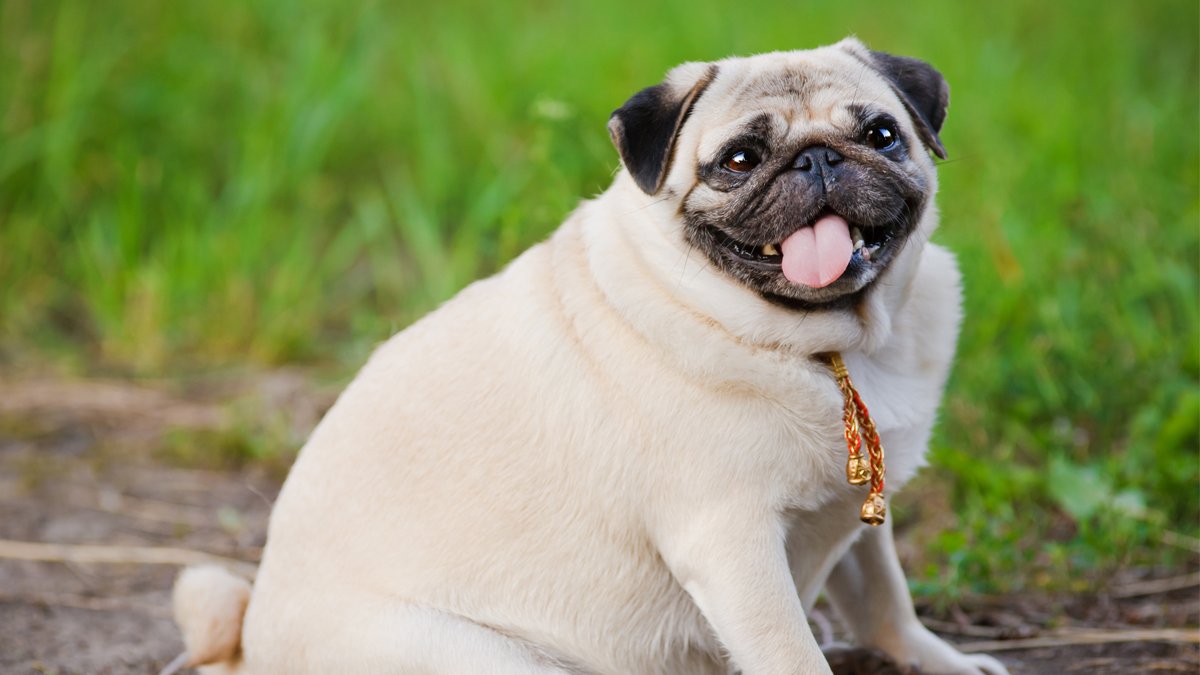How do you tell an owner that their dog is obese?
Alice Roberts, a final-year BVMSci Veterinary Medicine and Science student, has recently published an article in In Practice magazine giving advice to practitioners on the best approach when dealing with owners who are reluctant to accept that their pets are obese. In an interview with Alice, we find out more about her research and what inspired her to write the piece.

According to the PDSA (People's Dispensary for Sick Animals), vets estimate that nearly 50% of dogs in the UK are overweight.

When did you first become interested in pet obesity?
Probably about 10 years ago, when a vet said that my cat needed to lose weight. What struck me at the time was that we weren’t given any guidance on how to best do this or how much weight she needed to lose. It wasn’t until I got to Surrey that I learnt about body condition and fat scoring, which looking back, would have been helpful for my family to know about from the start.
Obesity is a very sensitive topic and comes with many undesirable connotations. It’s easy for an owner to become offended and respond negatively to a vet when the topic comes up. They might not agree that their pet is overweight or may feel embarrassed or that they’re being blamed. If owners respond in this way, they’re unlikely to comply with weight-loss recommendations, which is not a successful outcome for the pet. By communicating effectively with the owner, a vet can avoid upsetting them, while achieving the best result for their client.
Can you tell us a bit more about your obesity research?
For my third-year research project, I investigated pet owners’ attitudes towards weight-related terms such as, ‘obese’, ‘fat’, ‘chubby’, ‘overweight’ etc. I wanted to see if owners would be more receptive to weight management suggestions for their pets, if a vet used particular terms.
As part of this, I surveyed several vets and the overwhelming response was that they felt quite awkward telling an owner that their pet was overweight. Hopefully the findings of my project can help veterinary professionals feel more confident having these discussions.
Why did you write the article?
I continued my research, assisting Dr Teresa Hollands during the summer and wrote the In Practice article off the back of this. I was curious to see how people would respond to a scenario where, Max, a visibly obese pug, is brought in to be seen and the owner tells you the reason they recently left their old veterinary practice was because they had been told Max was ‘fat’ and was subsequently unhappy with their statements on his condition. From my previous research, I'd found lots of papers and articles suggesting different approaches to dealing with pet obesity and wondered what other people would recommend.
What’s great about In Practice is that it invites readers to write in with their own opinions on the ethical scenario, and their responses are published in a later issue, which is a great way of bringing together different expertise and lived experience.
What do you hope comes of the piece?
I hope my article can provide some guidance for vets, especially new graduates, who find themselves in a similar situation and are unsure on how to approach this delicate and sensitive topic.
Pet obesity is commonly seen in small animal practice, and it can lead to many life-limiting health conditions. In almost all cases obesity is preventable, so if we can address the problem, we can significantly improve the health of affected pets and increase their life expectancy, as well as their quality of life in general.
What are your plans after you graduate?
I hope to work as a vet in a small animal practice where I can apply my knowledge of pet obesity and use my communication skills to improve the quality of life of the animals I care for.
Read the full article (PDF) and see the December issue (PDF) for responses from practitioners.
Find out more about our BVMSci (Hons) Veterinary Medicine and Science course.
